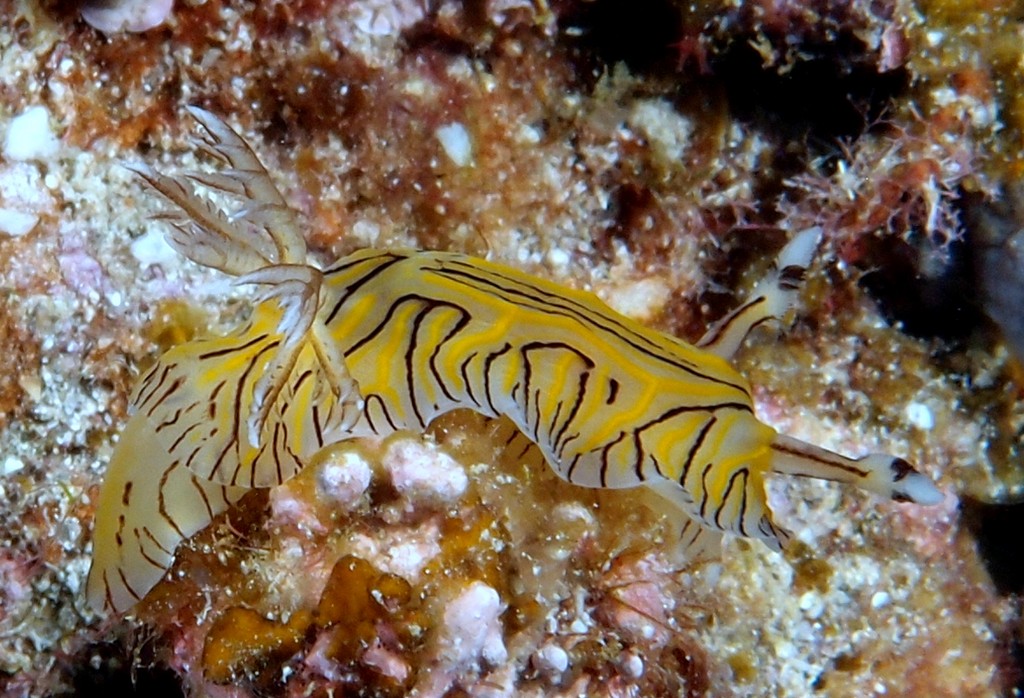HALGERDA JOHNSONORUM - (CARLSON & HOFF, 2000)
Opisthobranchia (Infraclass) > Nudibranchia (Order) > Euctenidiacea (Suborder) > Doridacea (Infraorder) > Doridoidea (Superfamily) > Discodorididae (Family) > Halgerda (Genus)
Description
Very soft and flaccid as compared with the more typical rigid feel of the body of a Halgerda. It is very similar in colour to Halgerda willeyi. The one external difference noted by the authors is that Halgerda johnsonorum has brown spots and lines along the side of the body, under the mantle whereas Halgerda willeyi does not. Carlson & Hoff note differences in the anatomy of the reproductive system and radular morphology. Size: about 28mm.
Etymology
This species was described by Clay Carlson and Patty Jo Hoff. The name "johnsonorum" was chosen to recognize good friends Scott and Jeanette Johnson, the "orum" ending denoting a double patronym.
Biotop
Nocturnally active in caves and ledges at depths of about 10 to 20 meters.
Description
Very soft and flaccid as compared with the more typical rigid feel of the body of a Halgerda. It is very similar in colour to Halgerda willeyi. The one external difference noted by the authors is that Halgerda johnsonorum has brown spots and lines along the side of the body, under the mantle whereas Halgerda willeyi does not. Carlson & Hoff note differences in the anatomy of the reproductive system and radular morphology. Size: about 28mm.
Etymology
This species was described by Clay Carlson and Patty Jo Hoff. The name "johnsonorum" was chosen to recognize good friends Scott and Jeanette Johnson, the "orum" ending denoting a double patronym.
Biotop
Nocturnally active in caves and ledges at depths of about 10 to 20 meters.
